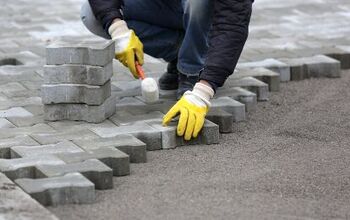How To Polarize A Generator (In 3 Easy Steps)

Whenever the generator is removed from an electrical system, it needs to be polarized prior to reinstallation. Polarization is the process of matching the current flow to the electrical system before connecting the generator. Generators can produce either a positive or negative current, but most electrical systems are designed to accept a current flowing in one direction.
When a generator is in regular use, it will ‘remember’ the direction of the current using stored magnetism. If the generator isn’t used for a long time, this magnetism dissipates. The generator ‘forgets’ the direction of the current flow. The same thing occurs any time the generator is removed or replaced from the electrical system. You must always be sure it is polarized correctly before reconnecting it.
If you’re ever unsure of your system’s polarity, check the owner’s manual or contact the manufacturer before performing this procedure. Improperly polarizing your generator can destroy your electrical system. So, in this article, we will explain how to polarize your generator in just three easy steps.
Don't want to do it yourself?
Get free, zero-commitment quotes from pro contractors near you.

Tools That You Will Need
The tools needed for this procedure are simple:
- An insulated screwdriver or socket set
- Jumper wire, 14 or 16 gauge
- 2 Alligator clips
- Electrical tape ( Substitutes for Electrical Tape)
By ensuring you have the proper tools ahead of time, you’ll save additional trips to the store and unnecessary stress.
Instructions: Polarizing A 12v Generator
12v generators can be installed in either positive or negative ground systems, so it’s essential to know your electrical system’s polarity.
Steps one through three are compatible with either type of system. Step four has a little variation depending on if you have a positive or negative ground system. Check your owner’s manual or call the manufacturer before proceeding if you’re unsure.
Step 1: Remove The Fan Belt
If the generator is still in the machine it is a part of, remove the fan belt. You may be able to remove it by hand. If not, use the socket set or screwdriver to loosen the sway arm holding the fan belt in place. Set the fan belt and bolts or screws to the side to make sure you can keep track of them.
There are magnetic wrist bands available for individuals who frequently work with small accessories such as screws and nails. The nails and screws will stick to this wrist band. So that might be something you want to look into to make your life a bit easier.
Step 2: Fashion A Wire
Using your 14 or 16 gauge jumper wire and your two alligator clips, fashion a wire long enough to reach from the generator to the battery. This can be pretty situational in length. Be confident that there is no part of the wire exposed using electrical tape.
If there is a part of the wire exposed, this can cause electrical shock or possibly even start a fire! So take the time to make sure you’ve covered every inch with some electrical tape.
Step 3: Attach The Jumper Wire
On your generator, there should be a terminal label with an “A.” The A stands for the Armature terminal, and this is where you want to attach the jumper wire.
Negative Ground Systems
IMPORTANT: BE SURE OF THE POLARITY OF YOUR SYSTEM PRIOR TO PROCEEDING.
Very lightly brush the positive (+) terminal on the battery with the other end of your wire. This should produce a few sparks – be careful not to let it stay in contact for too long, as it can damage the generator. This will restore the stored magnetism within the generator, allowing the correct polarity current to flow when it is powered on.
Positive Ground Systems
BE SURE OF THE POLARITY OF YOUR SYSTEM PRIOR TO PROCEEDING.
With the other end of your wire, very lightly brush the battery’s negative (-) terminal. This should produce a few sparks – be careful not to let it stay in contact for too long, as it can damage the generator. This will restore the stored magnetism within the generator, allowing the correct polarity current to flow when it is powered on.
Process Of Polarization
Polarization is the process of matching the polarity of your generator to that of your voltage regulator.
When a generator produces a voltage, the pole pieces will store magnetism that indicates the current flow direction. Most of the time, this ‘memory’ is sufficient to keep your generator and voltage regulator functioning correctly.
If the generator has been removed for repair or is being replaced, it can lose this stored magnetism and ‘forget’ which way the current flows. Most electrical systems are designed to only accept current flowing in one direction, with catastrophic results if the reverse current is introduced.
This can result in severe damage to the entire electrical system, permanently destroying vital components.
Importance Of Polarizing A Generator
A generator is any device that converts mechanical energy into electrical power for use. The most common source of these generators is within the charging system of consumer vehicles, tractors, or portable electrical generators.
Generators can output either positive or negative current. When a generator is shut off, some of the electrical currents are retained in the form of stored magnetic force. The next time it starts up, it uses this stored magnetism, or ‘memory’ to restart the current in the direction it was previously flowing.
If that stored magnetism dissipates, the generator will be nonfunctional and won’t produce electricity. Even worse, if the magnetism reverses the direction of the current flow, it could damage other components in the machine.
Voltage regulators are one such component. If a generator is not adequately polarized before being connected, it can destroy the entire system.
Dangers Of Not Polarizing Your Generator
Generators commonly store magnetism in their pole pieces. This stored magnetism will then help the generator ‘remember’ which way the current flows as it leaves the generator. Most of the time, the residual magnetism will be sufficient to allow the generator to function correctly.
When a generator is serviced or removed from its housing, it dramatically increases the chances that the stored magnetism will dissipate. Always polarize a generator properly before introducing it to an electrical system.
The generator’s polarity can even be reversed while being serviced. If reintroduced to your electrical system like this, it can cause severe damage. Both to the system it’s being connected to and anything plugged into that system.
When To Polarize Your Generator
Polarization should be done any time there has been any maintenance to your generator or electrical system. Additionally, the procedure should be done any time the generator sits idle for long periods of time (months or years).
Sitting idly for months or years can cause your generator to lose its stored magnetism, rendering it incapable of producing electricity. This doesn’t often cause the same level of damage as a reversed current but still causes issues that polarizing your generator will fix.
If you replace, repair, or otherwise need to disconnect or reconnect any part of your electrical system – make sure the generator is polarized correctly.
Is It Okay Not To Polarize A Generator?
It’s not okay not to polarize a generator. If you don’t, there are several issues that can happen, and some of them are severe. The regular contacts will eventually burn, and the generator will get damaged. In addition, the battery can become discharged or even blow up! You don’t want to suffer battery damage or any of these other issues, especially when you need your generator.
Related Questions
How do you polarize a generator with a positive ground?
In order to polarize a generator on a tractor with a Delco 6V positive ground, or one with a Lucas 6 or 12 V positive ground, you will need to attach one clip on the A terminal. The other clip will then be tapped to the negative terminal on the battery. Don’t connect it, as this should be a very quick, split-second ‘tap’.
What does polarizing a generator do?
What happens if you don’t polarize a generator?
Don't want to do it yourself?
Get free, zero-commitment quotes from pro contractors near you.

Wrapping Up
When you’ve finished the polarization procedure, the current will correctly flow through your electrical system. Improperly flowing current can cause all kinds of issues and can destroy your system. By properly polarizing the generator before connecting it to the electrical system, you can be sure that you’re not causing permanent damage.
Once you know the polarity of your system, the process is simple. It doesn’t require complicated tools and can be done by your basic handyman safely. That said, electrical systems can be finicky. Always be sure you have a firm grasp of the concepts before working on them.
Related Guides

We are a team of passionate homeowners, home improvement pros, and DIY enthusiasts who enjoy sharing home improvement, housekeeping, decorating, and more with other homeowners! Whether you're looking for a step-by-step guide on fixing an appliance or the cost of installing a fence, we've here to help.
More by Upgraded Home Team













![The 10 Best Table Saws - [2022 Reviews & Buyer's Guide]](https://cdn-fastly.upgradedhome.com/media/2023/07/31/9070645/the-10-best-table-saws-2022-reviews-buyer-s-guide.jpg?size=350x220)













